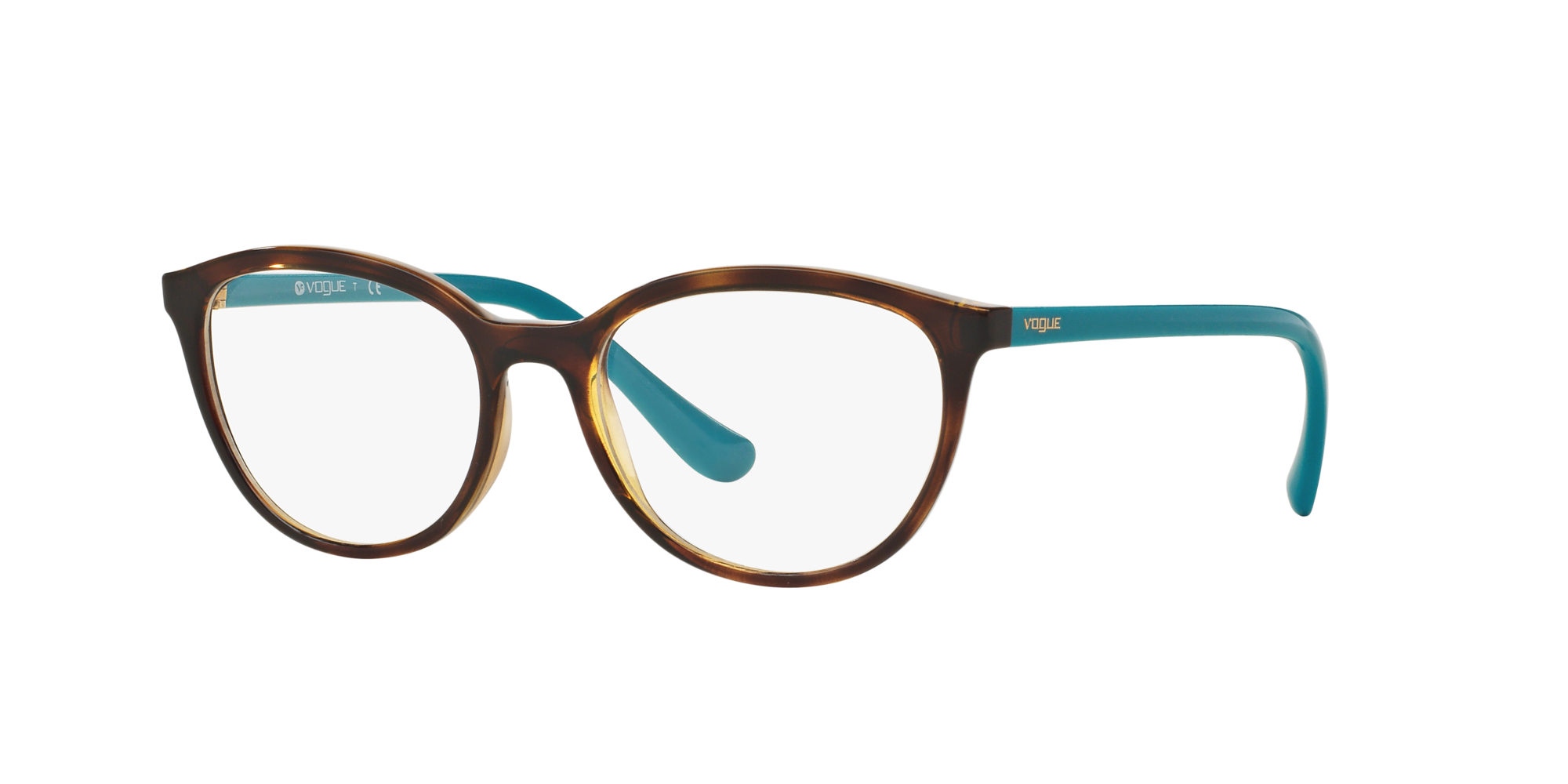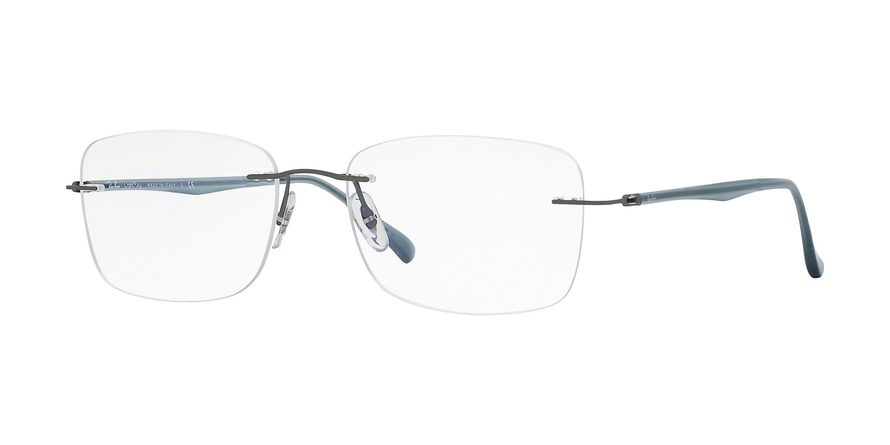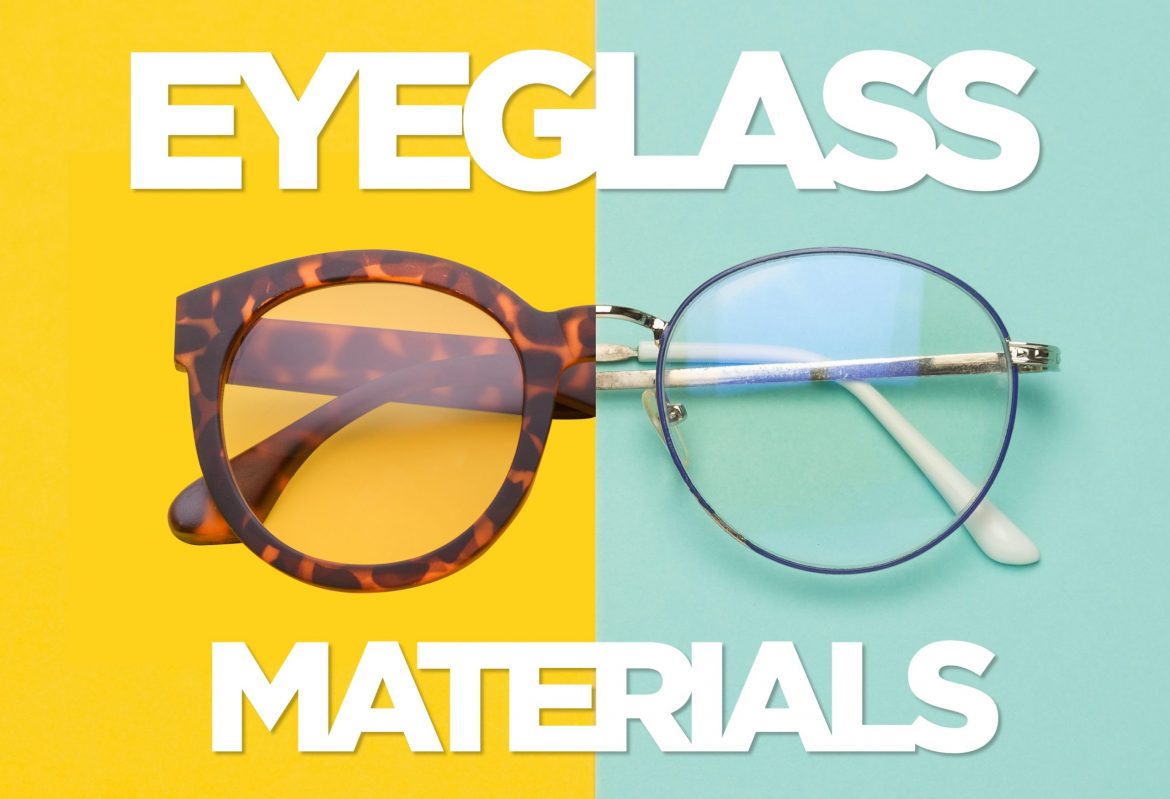![]()
It’s a material world. Frame materials, that is. From plastics to metals, and everything in between, here we offer you a look at today’s top frame materials.
Eyeglass frames materials are generally described as metal, plastic, or a combination of the two. These are the broad buckets in which most frame materials belong but there’s quite a bit of variety within them.
How do you select an eyeglass frame material?
It’s likely, you’re more concerned with a look, color, or feel—not a material per se. Or maybe you’re looking for a particular feature…
- You’re into fun colors with flair. Plastics fit the bill.
- You want fashion? Perhaps you’d prefer a combination metal and plastic cat-eye frame with rhinestones or crystals.
- Function? For styling thin, lightweight, or hypoallergenic frames, titanium is tops.
- Want high tech and futuristic? Check out carbon fiber, made from fibers woven together for super strength.
- And, finally, you have options for eco-friendly eyeglass frames.
To help you understand your options and select the material that’s right for you, we present a comprehensive rundown of frame materials—three plastics and seven metals.
3 plastic eyeglass frame options
Cellulose acetate
Cellulose acetate is also referred to as zyl and is today’s most popular material for eyewear.
The material is originally sourced from the cellulose substance of cotton plants with additives including stabilizers and plasticizers. To convert the material to eyewear, manufacturers either cut the frames from plastic blocks or injection-mold it.
In addition to delivering great comfort, consumers love how cellulose acetate can be colored in every hue imaginable. It can also be patterned, laminated, and more. The colors are embedded, so they literally cover the spectrum—from super vibrant to soft and subtle.

Vogue VO5037 is an example of plastic eyeglass frames offered in an array of color options.
Nylon
Nylon also goes by the names gliamides and grilamid. It’s tough, durable, stiff, hypoallergenic, and resistant to temperature extremes. As a result, nylon materials are most often seen in performance sports eyewear and sunwear designs and is the ideal material for wrap-around styles.
There are also bio-based nylons, sourced from unexpected components like castor beans. One challenge? Because it’s a stiff material, nylon frames aren’t as easy to adjust as zyl, for example. They are, however, very affordable.
TR-90
Preferred by wearers who participate in very physical activities, TR-90 is what’s called a thermoplastic polyamide. It’s lightweight and at once pliable and strong. It also has a “memory,” meaning that if flexed, it will return to its original shape. TR-90 is great for sunglasses because it performs exceptionally well in extreme temperatures.
7 metal eyeglass frame options
Aluminum
Aluminum is lightweight and, when alloys are added, super strong. How strong? It’s much like steel but weighs half as much. It also resists corrosion, but because it’s soft, aluminum may be a bit less durable than some materials. The fact that it’s completely recyclable is a plus for some consumers.
Beryllium + copper beryllium
This material is an excellent choice for anyone who wants a highly polished metal finish or spends a lot of time near saltwater. The grey metal is extremely anti-corrosive and tarnish-resistant. As an element, beryllium is found in many gemstones and is an excellent material for frames when copper is added into it.
Carbon fiber
Often referred to as a futuristic material, carbon fiber is actually very thin fibers woven together in a “crystal” alignment. The result is a super-strong material, often used in key eyewear parts like temples. It checks off everything on the benefits list—strength, flexibility, light weight, and durability—but it’s also more expensive than most other materials.
Memory metal
As the name implies, memory metal retains its shape, even after being twisted or bent. Made from a blend of metal alloys, the most popular combinations include copper + aluminum + nickel, or, nickel + titanium. Known for superior comfort, memory metal tends to be more expensive than other metal alloys.
Metal alloy/monel
Generally very affordable, this mix of metals includes monel and continues to vie with zyl in the frame material popularity contest. Monel is mostly nickel, with copper and a bit of iron added. Some alloys include varying amounts of titanium.
The result? Super lightweight frames at a substantially lower cost than a traditional titanium product.
Stainless steel
Considered a relatively lightweight and much more affordable option to titanium, stainless steel frames are both well-priced and resistant to corrosion and heat. And, because they’re nickel-free, stainless steel frames are also hypoallergenic for most wearers.
Titanium
There’s titanium—and then there’s titanium, which is to say the percentage of titanium varies. If you’re concerned, you may want to look into the percentage of titanium in a high-end frame you may be considering.
If you see a frame described as 100% titanium, in reality that means at least 90% of the frame’s total weight should be made up of titanium. If it’s only 75%-89% titanium, the frame will be less hypoallergenic and corrosion-resistant.

Ray-Ban RX8725 is an example of rimless frames made with titanium.
Regardless, titanium frames are at once strong and lightweight. Used in the manufacture of high-end frames, titanium is the material seen in many of today’s minimalist frame styles, including rimless and semi-rimless looks. It’s also extremely resilient, meaning it can be bent or twisted and will return to its original shape. The fact that it’s available in a multitude of colors is another plus.
What’s next in the frame material world?
Experts agree that many introductions for eyeglass frame materials will actually be targeted and hyper-focused on specific-use combinations of materials. That is, hybrids will bring current materials together in different, function-specific proportions. The result will be products that further satisfy specific needs regarding strength, flexibility, weight, and more.
Did you know that you can filter your eyeglass selection on EZContacts by material?


